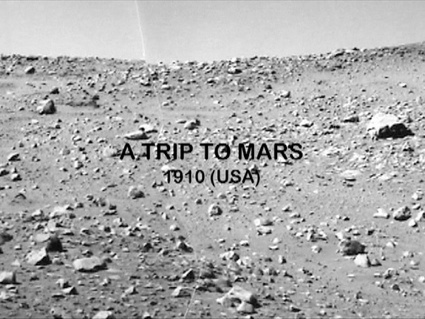 David Clarckson, Colony, 2007
David Clarckson, Colony, 2007
Sorry i’ve been a bit slow coming up with the last chapter of Estación experimental [Experimental Station]. Opened a few weeks ago at Laboral Art and Industrial Creation Centre, the exhibition looks at the way artists are inspired by scientific research.
The Lost in Space section of the exhibition explores the outer space, that part of the universe that excites the imagination of scientists and artists alike. Because of its high percentage of science fiction, enigma and political undertones, that was the part of the show i liked the best.
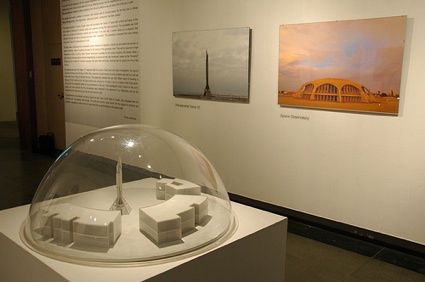 Kiluanji Kia Henda, Icarus 13, 2006
Kiluanji Kia Henda, Icarus 13, 2006
Kiluanji Kia Henda’s project Icarus13 documents with photos, a model and a text the preparation for the first ever expedition to the sun led by the Angola government. The photos of the space station buildings and astronomy center are pretty impressive:
 Kiluanji Kia Henda, Icarus 13 (detail: image of space shuttle), 2006
Kiluanji Kia Henda, Icarus 13 (detail: image of space shuttle), 2006
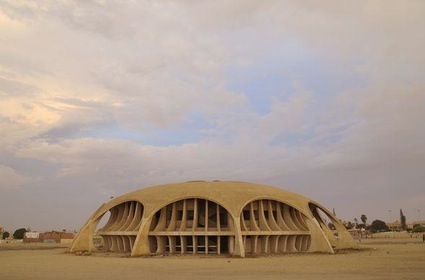 Kiluanji Kia Henda, Spacecraft Icarus 13 – The first journey to the Sun (Astronomy Observatory), 2008
Kiluanji Kia Henda, Spacecraft Icarus 13 – The first journey to the Sun (Astronomy Observatory), 2008
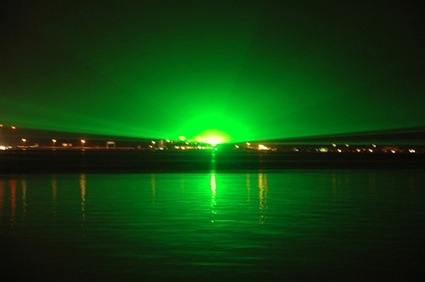 Kiluanji Kia Henda, Icarus 13 (detail: The launch), 2006
Kiluanji Kia Henda, Icarus 13 (detail: The launch), 2006
Only bummer is that everything about the Angolan sun mission is fiction and irony. The technical experts we see getting the Icarus 13 machinery ready for take off are in fact construction workers in Luanda that the artist photographed during raids work. And most of the buildings that look so perfect for a space mission are in fact vestiges from Angola’s colonial history: Icarus 13 is an unfinished mausoleum left by the Russians in Angola. “The Centre for Astronomy” is a cinema that decolonization left unfinished. The images showing the lights on the departure of the ship were taken during the celebrations of the trip Angolan Black Antelopes’ to the World Cup 2006, etc.
The name of the mission himself, Icarus 13, dooms any enterprise of the kind to failure: Icarus was after all that young man who, in Greek mythology, fell to his death while flying too close to the sun.
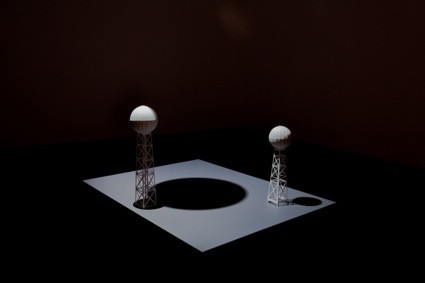 Installation No. 4 (Towers), 2008
Installation No. 4 (Towers), 2008
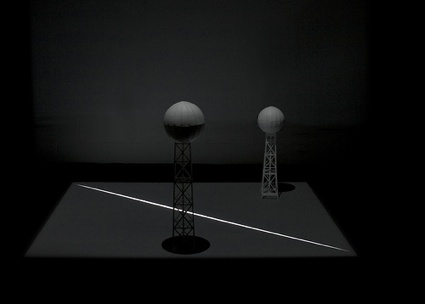 Installation No. 4 (Towers), 2008
Installation No. 4 (Towers), 2008
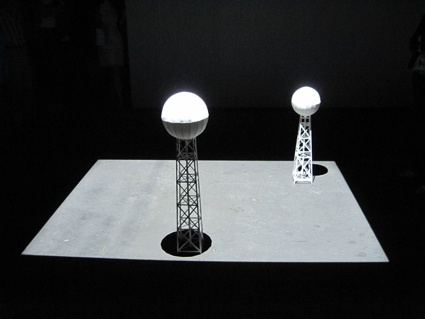 Jan Tichy. Installation No.4 (Towers), 2008
Jan Tichy. Installation No.4 (Towers), 2008
Maybe Jan Tichy‘s mysterious astronomic observatory is also planning an outer space trip.
Installation No. 4 (Towers) is part video, part architecture where light and darkness very slowly move over the models as if they were submitted to the rotation of the planets. However no one knows whether the buildings really belong to an astronomic observatory, or what the source of the light is. In fact, i suspect their purpose is a dark and disquieting one. What are these towers controlling, communicating or monitoring? We watch the whole subtle and slow transition from light to darkness, punctuated by clouds with troubling shades but we are nowhere near understanding what what is at stake in the work.
In his work, Tichy has often explored architecture and its political impact. This installation evokes a power that we see at work but have no means of stopping or influencing.
Lyn Hagan, Cat in Zero Gravity, 2008
Lyn Hagan is the only artist in the show who physically engaged with space, more precisely with zero gravity. She took a cat and a mouse with her at the Yuri Gagarin Cosmonaut Training Centre in Moscow and filmed the way the animals experienced 10 parabolas of weightless (23 seconds each of zero gravity). The aim of the artist was to confirm whether the feline instinct remains in the absence of gravity. The slow motion film shows that the cat is too busy swinging around to pursue its prey. According to the catalogue (which you can download in PDF form), Hagan is currently working on the possibility of producing and filming a choreography that would be carried out by a robot on the surface of Mars.
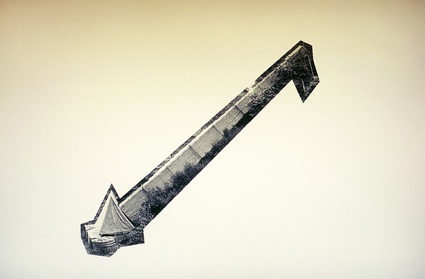 Paloma Polo, The Path of Totality, 2010
Paloma Polo, The Path of Totality, 2010
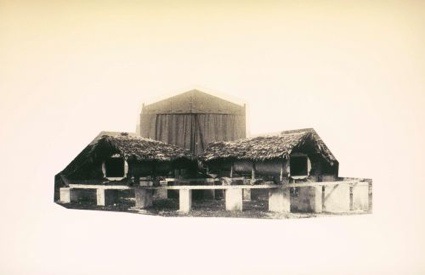 Paloma Polo, The Path to Totality (detail), 2010
Paloma Polo, The Path to Totality (detail), 2010
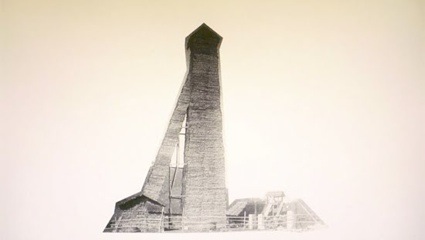 Paloma Polo, The Path to Totality (detail), 2010
Paloma Polo, The Path to Totality (detail), 2010
Paloma Polo’s The Path of Totality is a slide show of images of the bizarre eclipse observatories built from the mid-19th to the early 20th century in the USA, France, Germany and Italy, countries that invested in astrophysical research.
The catalogue grew through the artist’s exchange with experts in astrophysics, who guided her search through libraries and archives at observatories and astronomical institutes.
The structures are precarious, erected in places strategically chosen for optimum observation of the phenomenon. Their only aim was to provide the best possible shelter for the instruments to study the astrophysical phenomenon.
The resulting catalogued archive of specific structures reflects the race for political and economic power by the countries that were vying against each other to prove their progress – also in the field of scientific research. All of them had extensive colonial territories spread throughout the planet, although, curiously, Spain was left out because, like Portugal, it had already fallen behind.
But Polo actually uses these images to lead us into the slippery subject of science instrumentalised by power, a recurring debate throughout history that repeatedly crops up in both art and science.
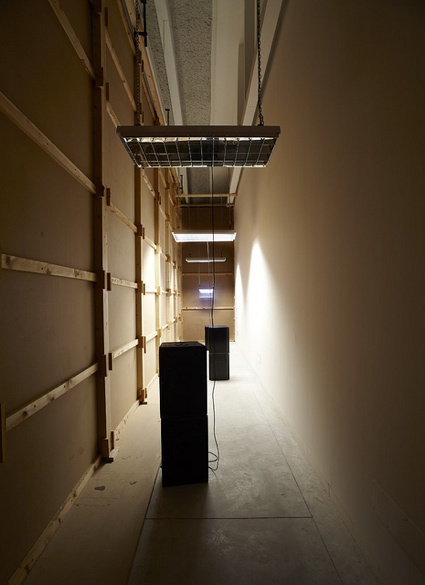 Esther Mañas and Arash Moori, Tones in the Voice of Shadows, 2011. Photo by Marcos Morilla
Esther Mañas and Arash Moori, Tones in the Voice of Shadows, 2011. Photo by Marcos Morilla
Estación experimental [Experimental Station] remains open through April 9, 2012 at Laboral Centre of Art and Industrial Creation in Gijón, Spain.
Image on the homepage: Lyn Hagan, Cat in zero gravity, 2008.
Previously: Experimental Station – Caleb Charland, Experimental Station – Part 1, In the Laboratory and Experimental Station – Part 2 (Fieldwork + Artefacts and Mechanisms).
